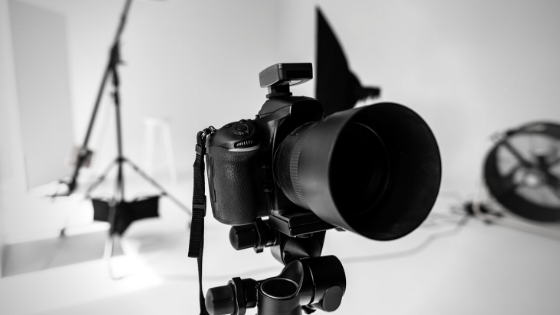If you have something to say – in life, at work, in class – it is like being an actor on stage or in front of the camera.
You have the floor! The spotlight is on you! This is your moment to be heard! You know that people are looking at you expectantly… judging you…

Now your heart is beating fast, your hands are sweating, and you are freaking out!
Although you feel exposed and aware of these things in that moment, you need to realise that people see and hear you all the time.
This moment feels bigger than it is. Feeling out of your comfort zone can make you feel out of control, but you’re not.
Remind yourself that it is not about you!
You are there to serve the audience and they need your message. Therefore, this moment that feels so big is about your message, not you.
How you present, regardless of how you feel, can be changed and that is where acting and presenting tools come in.
Body language, body positioning, stagecraft and a strong and clear voice can help us to be perceived as confident. Rewards Drama teaches these things, but also the tricks of the trade that can help you to appear more professional.
When working on camera for example, there is a simple element that makes the professional video stand out from the amateur and is imperative to get right: Lighting quality.
For filming a properly and well-lit scene you only need three main lights.
It is known as three-point lighting and consists of the following three lights:
- Key
- Fill
- Back/Hair
The Key light is the main light and is the one closest to you, positioned on your left or right and pointing towards your face on a 45-degree angle.
The Fill light is either twice as far away (to make it softer/about half as bright as the key) or half as bright a light and is your other side at a 45-degree angle. Its job is to balance the shadows created by the key and add dimension to the face.
The Back/Hair light is the light above the subject and gives the subject a slight halo effect. The main purpose of it is that it separates the subject from the background by defining the outline of the subject and provides depth of field.
You don’t need to go and purchase professional lighting -Start with the lights you have!
If you have a window, you can use it.
Try to sit/stand so the natural lights falls onto your face and use it as your fill, rather than having your back to it as that will create silhouetting.
Secondly, most rooms have overhead lighting. Use it!
Try to position yourself a bit in front of it (rather than directly below) so that you can use it as your back/hair light.
For your key light, find what you have – a lamp, an led etc and use it!
There are many tools and skills that you can learn to help you, but at the end of the day, you are there because you have something to say. Something that needs to be heard. So, go out there and say it!





















